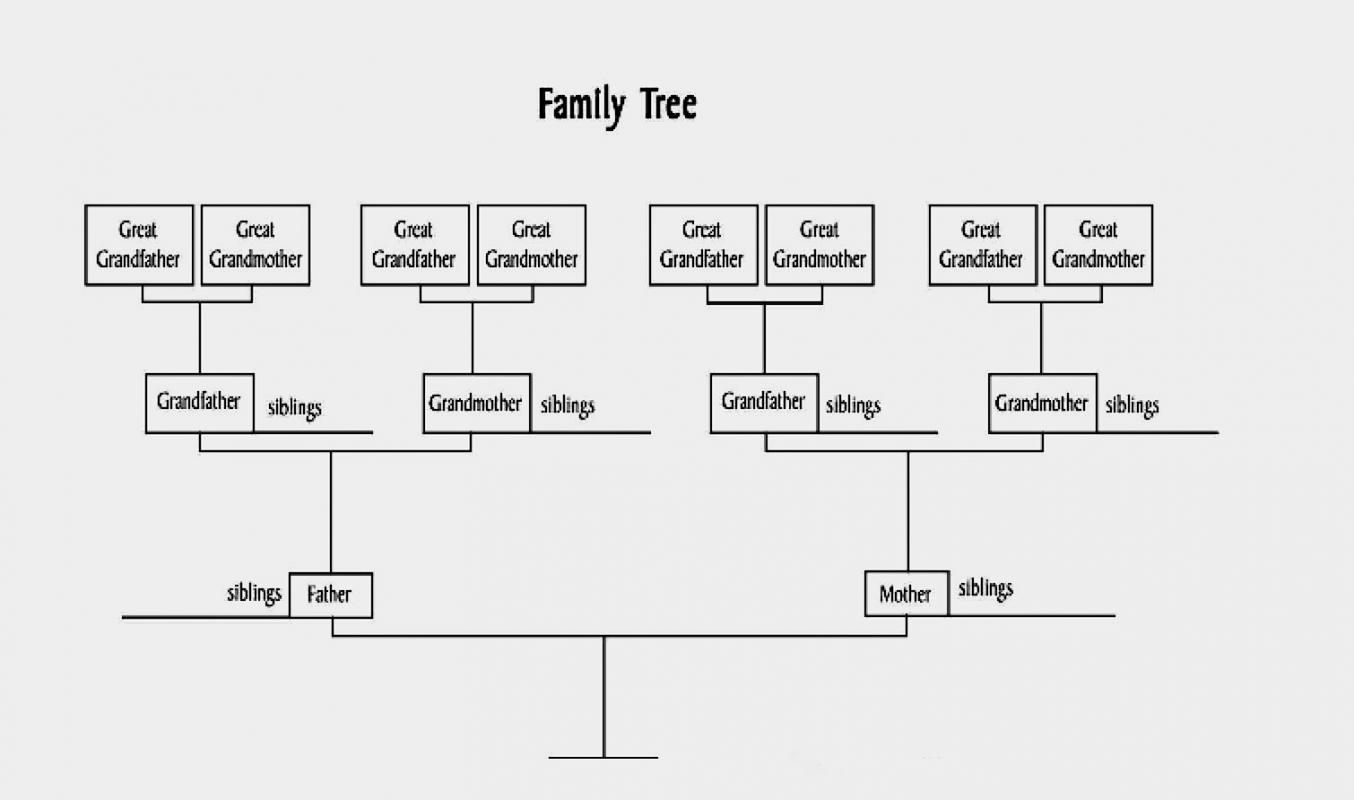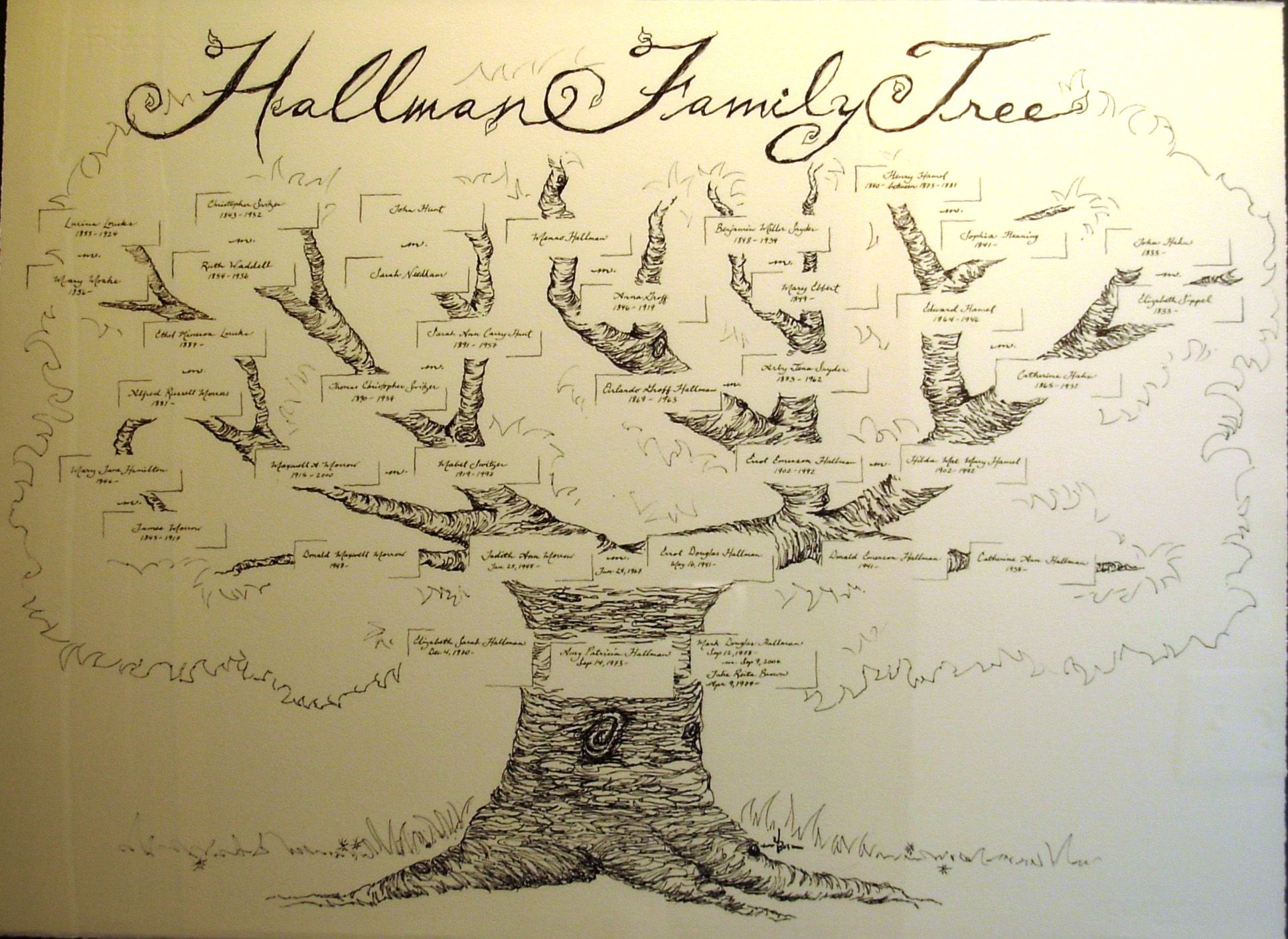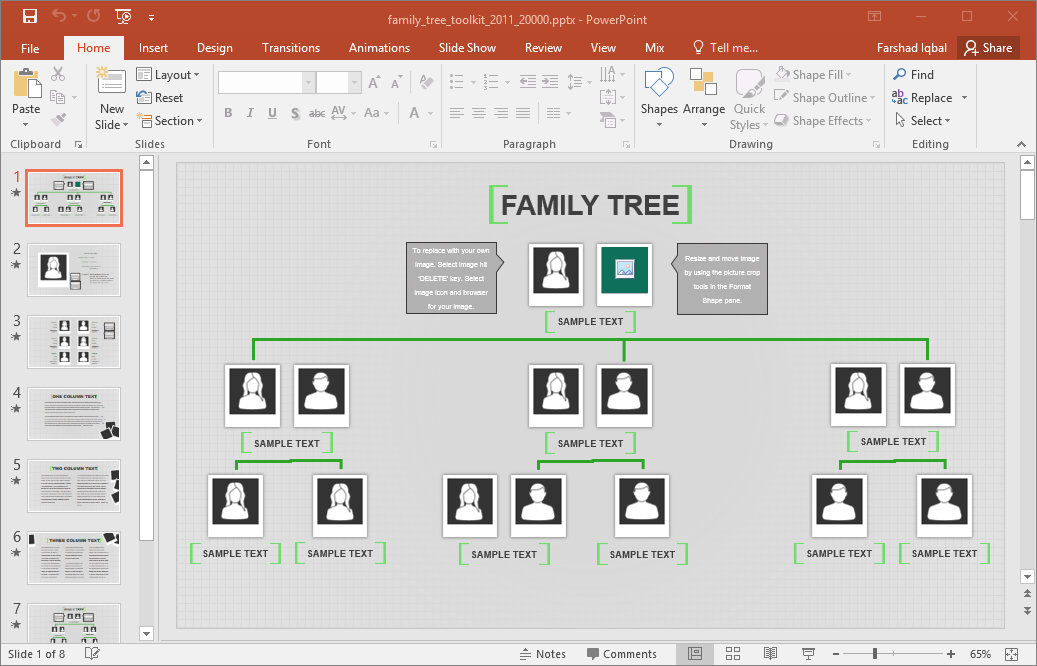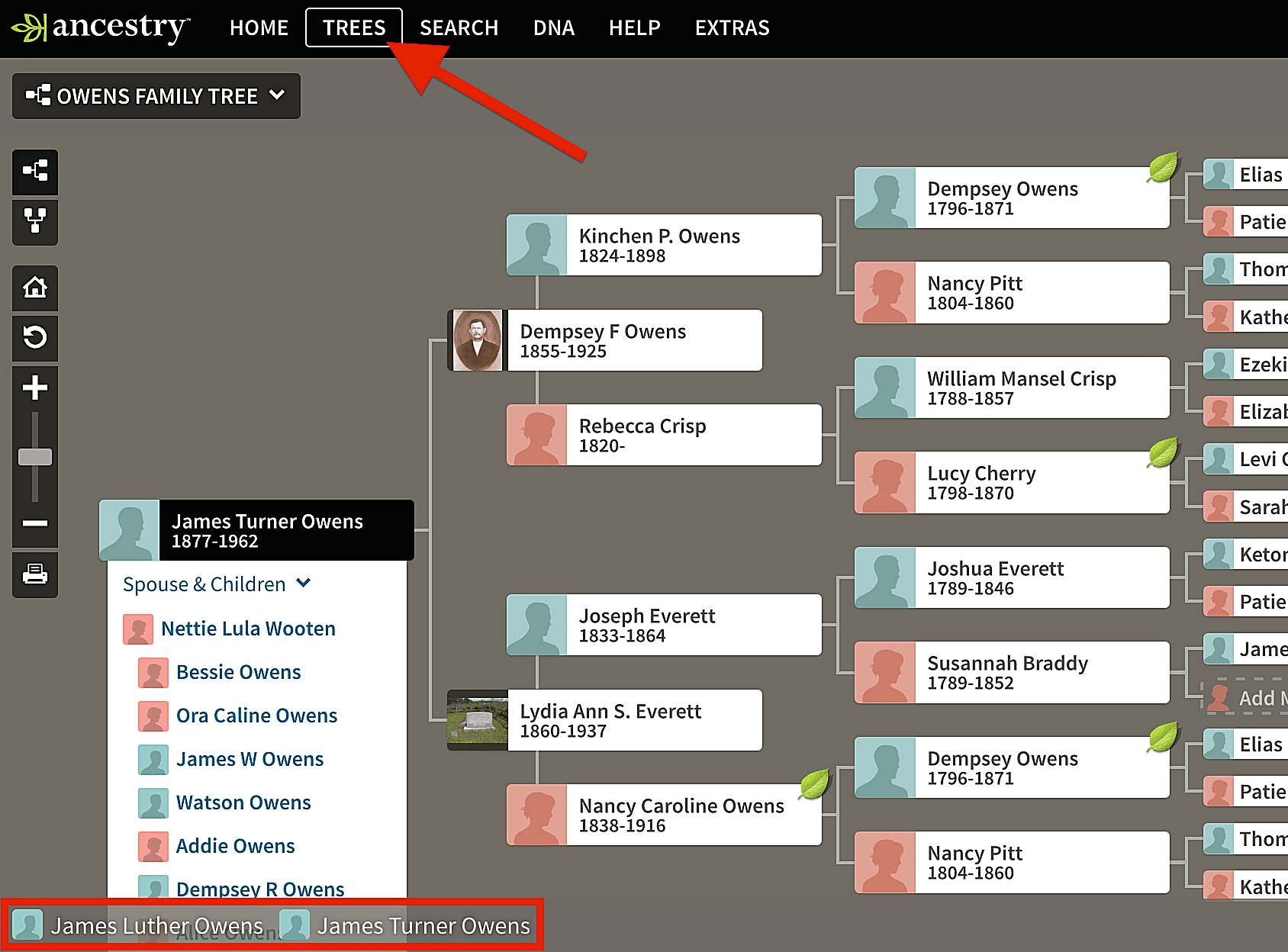How to Make a Family Tree
Understanding who our closest relatives are and how they are related to us is not really that difficult. When we start to build out our family tree a little and the names start to add up it can start to get a little confusing.
In order to cut through this confusion we place our ancestors both direct or indirect onto a family tree. It is by following the branches of this tree that we can start to understand how our relationships to these individuals work.
Ancestry is Our Top Recommendation
If you love genealogy and family history research, then you must know Ancestry. They are the best way to discover the rich stories of your family!
With over 30 billion (seriously!) records in their database, you can research your family and discover amazing details you may never have known about your ancestors.
With a 14-day free trial, it's very easy to get started and discover your past!
Get Started →Imagine if you found out you are related to, say, George Washington. Now he may not be a direct ancestor but he could have been the brother or a cousin of one of your direct ancestors. With the use of a tree you can see just where George fits in your tree visibly.
It is therefore important to represent your family history as part of a tree so as to better understand the connections you have to individuals who may have lived hundreds of years ago. In this post we will look at a few of the methods to make a family tree.
Some will be artistic while others are simply practical but essentially it is up to you how you would like to build your tree. So whether it is for personal viewing only or you intend it to be shared with the family there are many options of tree designs.
To find out more about family tree making, don’t forget to read our guide to the best genealogy software.
How to Start Your Family Tree
It is important before you even consider creating a visual family tree that you first do the important research. This of course will include gathering as much information as you can regarding your most recent ancestors.
Start by interviewing the oldest members of your family this will include parents, aunts, uncles, grandparents and if you are really lucky your great grandparents. Some people may even be lucky enough to have living great-great grandparents. My grandmother for instance became a great-great grandparent a few months before she died and was even in the local newspapers with a picture of the 5 generations of the family.

Ask the senior members of the family about all the people they remember. A great grandparent for example may be able to name their own grandparents who would be your great-great-great grandparents.
Find out where people were born, when they were born and any other information you can about them. Even family stories might offer up some clues, so if you can and they are willing to, record your interviews with these family members.
Aside from the obvious questions about family relationships, also engage your older relatives in discussion regarding what life was like when they were kids. Knowing this can help you better understand your ancestors and might give you insight into things such as reasons for immigration.
Once you have gathered together all the names and biographical information you can then you can start doing further research to help confirm details and possibly expand upon the generations you already have named.
Basic Sketch Family Tree
This is a method I find myself using from time to time when researching as it is a quick and easy way to visualize relationships. It’s not generally how you would draw a tree to be viewed by others but it is an old school way of keeping track of your research.
- Start with an empty piece of plain paper and a pencil
- Turn the page sideways and at the bottom of the page draw a circle large enough to fit the name and any other details such as birth and death dates
- Draw a short line up a few inches then branch that off to the right and left and draw to more circles.
- In these new circles add the information for the parents of the first individual
- Do this same process again from the two new individuals to include their parents and repeat for as many generations as will fit on the page or as far as you can go back in the tree
This is a very simple sketch which is good for focusing your understanding of the members in your direct family lines. It does not have to be perfect as long as you can read the information and understand it then that’s good enough.

This is a process I have used while reviewing old documents and records in libraries or record repositories. You may not have access to your digital trees in these circumstances so you may have to take note of any family connections you uncover.
It should be noted that you do not have to start with yourself and work backward; you could also start with a set of your distant ancestors such as great-great-grandparents and trace their line down to the modern day. In this case you would start at the bottom of the page and include all of their children or just the main line that leads to you.
An Artistic Tree
Some people may have a more artistic talent and have the ability to draw very well. You can use this skill combined with your family tree research to create a literal family tree. Sketching out a full tree shape including roots and branches with space for names can be very visually striking.
A simple sketch of a tree with spaces for the names will usually start at the roots as do all trees and branch out upwards. You might be the name at the root of this tree if you are tracking your ancestors or perhaps you could start with grandparents or great grandparents and the tree actually traces their descendants.

It’s all very much up to you how elaborate you wish to make the tree. The key is to make sure the branches represent the family connections so do not try and fit too many people on the tree or it might get visually cluttered.
Try an Excel Family Tree
If you are only trying to record three generations of a family tree then there is a simple Excel template that you might use. It allows you to fill in the names and birth years as far as your great grandparents so it is a good option for creating a small tree.
You can also add images to this tree so with some careful photograph choices you might be able to make a cool little tree to share with the family. As mentioned it doesn’t go back many generations but it is a very neat and easy way to create a basic tree.

Use a Printed Template
There are a whole host of online template family trees that you can either fill in online and print out or print and fill in by hand. Some are very decorative while others are more basic. Search around and find one that you like.
Once you have one you can fill it out and display it where you like or even send copies out to the family. It does not have to be expensive to share your research with others although there are obviously some high price point family tree making options out there.
Build a Tree Online
One big drawback of drawing a family tree or creating a physical family tree is the limited space. Some may remember the Black family tree that adorned a whole wall in Harry Potter movies. It would surely be a beautiful addition to be able to do something like this in your own home but of course it would not be so easily shared.
If you want to have a large and extensive tree that you can easily share with the whole family your best option to make a tree is online. You simply cannot do justice to enough generations or the masses of cousins you have in a family tree diagram.
There are plenty of family tree websites out there that allow you to add important information and pictures to your tree. You can easily track your family connections and some of them will actually figure out how you are related so you can tell at a glance.

I personally use Ancestry.com to build my tree and try to include as much detail as I can concerning the individuals in my tree. Using the AncestryDNA test I have even been able to place many of my cousin matches in their correct position within my family tree.
There are plenty of sites to choose from and many of them will offer options to print out sections of the tree as well which can be helpful.
What to Include in a Family Tree
In a visual family tree that you draw or print out you have limited room so it is vital to be smart with what you include. It would be wonderful to give a whole life story to each individual but in reality the most you will likely achieve is name, date of birth and date of death.
I know it’s not a lot of information but in terms of genealogy the details tell you a lot. With the dates of birth and death you know the years during which these individuals were alive. If you are a history expert you might know at a glance that your great-great-great grandfather was an adult during the Napoleonic Wars and may even have fought in them.
If at all possible, including a small picture of the individuals in your tree can be very pleasing although as mentioned the more room you take up with information and artistic flair the fewer generations you can likely fit in the tree.
If your family tree is extensive it is unlikely that you will be able to display it in its entirety as a physical tree.
Who Should Be in Your Family Tree?
I have spent many hours on genealogy forums and Facebook groups and seen many opinions as to who to include and exclude from a family tree. There are some gray areas when it comes to family such as adoption and relationship by marriage.
Most trees may start with just your direct ancestors such as parents, grandparents etc and perhaps your siblings. This is of course fine but you may reach a point where you start to notice that you have a notable great uncle or you might be a distant cousin of some famous individual.
Kevin Bacon for example went on a famous genealogy website and discovered he had a famous cousin who also happened to be his wife Kyra Sedgewick. You don’t have to include these non-direct members of your family but just be aware they are people with whom you share common ancestors.
When you add the siblings of great grandparents and their respective children you are starting to build what is known as a “wide” family tree. There is a benefit to doing this as sometimes those collateral non direct family members might hold the key to determining the identity of your next generation of ancestors.
It is often wise to know who else was in your ancestors' circle of friends and family as this can lead to evidence that proves a theory or gives you a hint as to where to research next.
I managed in my own tree to trace directly back to around the mid 18th century with my own ancestors all the way back to my 5x great grandparents. Once I had got back I started to build out wider research of the siblings of my direct ancestors in search of new information. Today my tree of ancestry has 1,899 individuals.
Conclusion
There are many ways to make or draw a family tree and it can be a really fun way to explore your creativity. You can flex your artistic muscles or work digitally to create an extensive tree to share with the family.
A family tree is a connection to the past and can teach us so much about what our ancestors endured and where we come from. It is especially appealing to see generations of family pictures in a tree format to look at the resemblances.
There’s no clearer proof to your grandmother telling you that you look just like your late grandfather at the same age than seeing the pictures close together.
Whichever way you decide to make your family tree it all starts with talking to the elders of your family and learning what you can from them. Listen closely and record it if you can because every story can hold a clue to the origins of your family.
Link To or Reference This Page
We spent a lot of time downloading, cleaning, merging, and formatting the data that is shown on the site.
If you found the data or information on this page useful in your research, please use the tool below to properly cite or reference Name Census as the source. We appreciate your support!
-
<a href="https://namecensus.com/blog/how-to-make-a-family-tree/">How to Make a Family Tree</a>
-
"How to Make a Family Tree". NameCensus.com. Accessed on April 24, 2024. https://namecensus.com/blog/how-to-make-a-family-tree/.
-
"How to Make a Family Tree". NameCensus.com, https://namecensus.com/blog/how-to-make-a-family-tree/. Accessed 24 April, 2024
-
How to Make a Family Tree. NameCensus.com. Retrieved from https://namecensus.com/blog/how-to-make-a-family-tree/.
